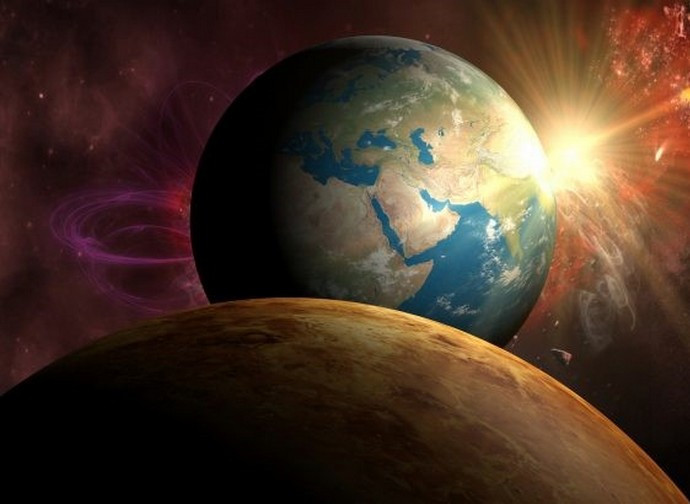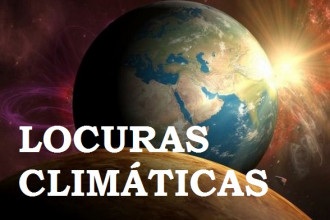Environment and Creation, opposites in the climate debate
The Amazon Synod has highlighted one more point of great confusion in public opinion, it involves the environment and climate. The problem lies with the terms "environment" and "creation” which are interchanged as if they mean the same thing although they are two opposing and irreconcilable terms.

The Amazon Synod has highlighted one more point of great confusion in public opinion which this time involves the environment and climate. The terminological confusion, which directly concerns the Catholic world, has serious consequences both from a conceptual and an operational point of view. It is the use of the terms "environment" and "creation" as if they were interchangeable. Or rather, as if creation were the Christian term to indicate the environment with essentially the same meaning. But this is not the case, indeed the words environment and creation represent two opposing and irreconcilable visions of reality.
Obviously, any reference to the term environment reflects the dominant ecological mentality which carries a negative view of human presence. As people are considered the disturbing element, the implication is that nature would be in a better state without their existence (see Climate Follies 6: sustainable development).
It is theorised that the Earth is a self-sufficient living organism (the Gaia hypothesis, for example), which was in perfect equilibrium until human activity. The only possibility not to "disturb" apparently would be if people remained at the primitive stage and depended exclusively on what nature provides. Hence, the exaltation of primitive peoples, as we witnessed recently with the Amazon, who according to this vision are a good example for everyone.
The environment, therefore, is considered something "alien" to the human race, whose survival depends exclusively on conducting the least possible activity and, indeed, by limiting its quantitative presence. It was not coincidental that in the first few days of the Amazon Synod, a few Synod fathers theorised the idea that the human race is the earth’s “guest.” Nor is it surprising that the movement organised around Greta Thunberg and Fridays for Future, has also motivated the movement of young people who are committed to not bringing more children into the world. "No future, no children", is the best known at the moment, but for many years, the "Voluntary Human Extinction Movement" succesfully attracted many sympathisers, especially in the Anglo-Saxon world. Just some years ago, in an international climate conference, the representative for China noted how they had already contributed significantly to combatting climate change, above all with the "one-child policy" which prevented the birth of 400 million children.
This is in fact where the expression "defending the environment" comes from. Defend because there is obviously an aggressor - the human population - which must be restrained from doing any more harm. As the Earth - according to this mentality - is a living organism, it is "rebelling" against abuses by the human race. It reacts to aggressions in the same way our body does with viruses, that is with a fever, an increase in temperature. In fact, the term "planet fever" is now common use in the global warming debate. Whereas, the "defence" implies that the goal is the preservation of nature, that is keeping things intact, delivering to the next generation what was delivered to the present and in the same condition. Indeed, the first ecological movements, which date back to the late nineteenth century, were in reality movements for the conservation of nature.
On the other hand, creation is a completely different concept which above all highlights the existence of a Creator on whom everything depends. The earth is a gift of God to humankind who is therefore not only part of creation, but is the first among all its creatures. There is an ontological hierarchy between the human race and other living beings.
But, precisely because we are also creatures, we must give account to the Creator. This is why we talk about care or safeguard: it is not "defending" but "cultivating." St. John Paul II spoke of "collaboration in creation."
And this is where freedom of choice is decisive: if God's plan is followed, Creation is rendered more beautiful and more humane; if people pursue their own project, they "disfigure" Creation. For this reason Pope Benedict XVI once said that the most serious threat to the environment is atheism. When ideologies that deny the Creator are embraced, inevitably there is an oscillation between naturalistic idolatry and the inhuman cult of technology, between the worship of Gaia and the irrational exploitation of resources.
On the contrary, there is a shining example in the history of the Church that shows how much good comes from acknowledging the Creator for both mankind and nature. This is Benedictine monasticism.
Anyone who has visited an ancient monastery, normally located on high ground, cannot help but notice, the beauty of the place where it is located. Someone might think about the monks good taste and particular ability to select beautiful places. But it is only fair to say that these beautifully landscaped places were not like that when the monks arrived. On the contrary, they were wild and inhospitable places and, above all in the High Middle Ages, the valorisation of work and the reclamation of the environment is owed to these monks which led them to literally rebuild Europe, when everything seemed destined for destruction and abandonment.
We owe the monks - writes Thomas E. Woods in "How the Catholic Church Built Western Civilisation" (Regnery History, 2005) - the agrarian reconstruction of much of Europe. Wherever they went, the Benedictines turned desolate land into cultivated land. They undertook the cultivation of livestock and land, worked with their own hands, drained swamps and felled forests.” Moreover: "Everywhere the monks went they brought crops, industries or production methods that no-one had ever seen before. In one place they introduced the breeding of livestock and horses, in others brewing, or beekeeping, or fruit growing.”
In Italy, we also have innumerable testimonies of places that became hospitable and thriving, optimal for habitation, because of the presence of Benedictine monasteries. But all this was not the result of an environmental friendly project or an analysis of the conditions of ecosystems. The root of this resounding success was described very well by Pope Benedict XVI in his famous speech at the Collège des Bernardins in Paris on 12 September 2008, speaking of the "secret" of the Benedictines: "Their goal was: quaerere Deum, to seek God. In the confusion of the times when nothing seemed to withstand, they wanted to do the essential thing: to strive to find what is worthy and endures, to find Life itself. They were in search of God ». The rest - culture, universities, singing and even the environment - were the consequences.
These few lines are sufficient to grasp what a tragedy it is for the whole of humanity, that the pastors of the Church have abandoned the Catholic vision to follow a mundane environmentalism that, contrary to declarations of intent, is ultimately destructive for nature.
(To be continued)

